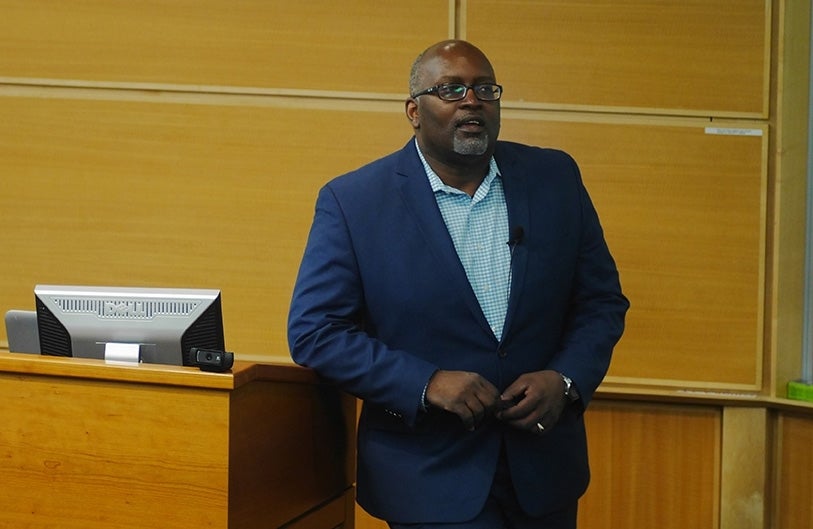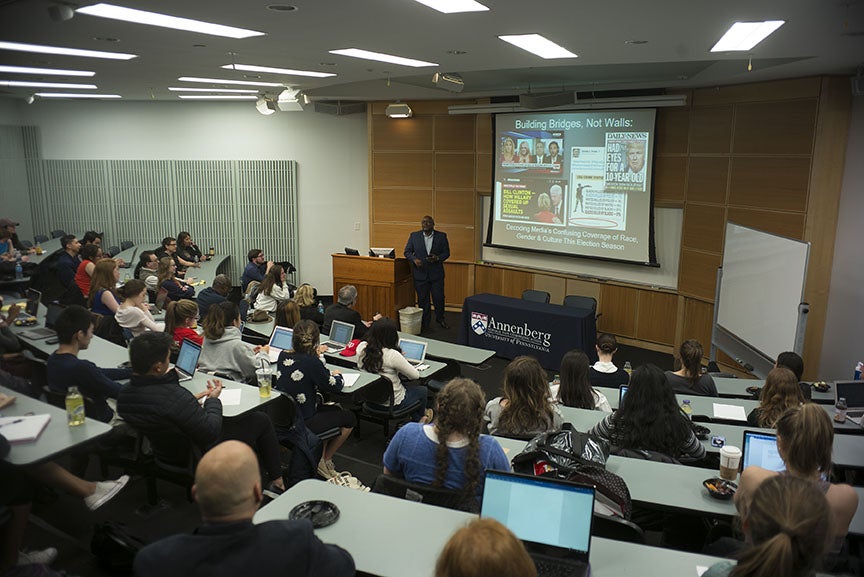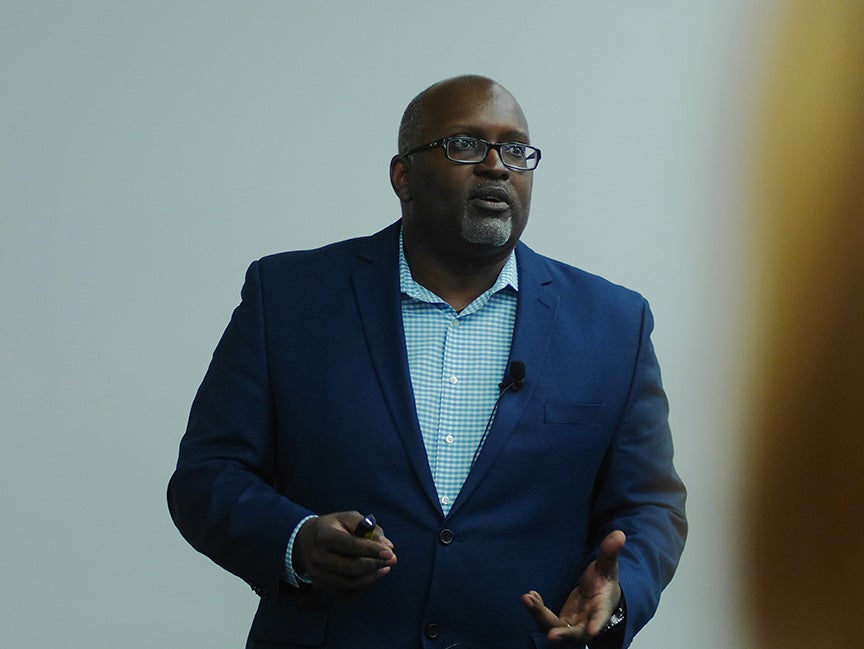NPR Television Critic Eric Deggans Lectures on Race and the Media at Annenberg
Deggans discussed social media’s impact on news dissemination and the types of racism evident in media reporting.

This is a conversation. Mistakes don't make you a racist. Talking about race and gender isn't racist or sexist. White people have a stake in race issues, and men have a stake in women's issues. Everyone gets respect.
These are the ground rules with which Eric Deggans began his March 21 lecture at Annenberg, “Building Bridges Instead of Walls: Decoding the Media’s Confusing Coverage of Race and Culture.” NPR’s first ever Television Critic, Deggans said getting paid to watch TV is awesome. But he also reminded the audience that his real job is to carefully monitor how media affects all of us.
It quickly became clear that he’s doing just that. Using video clips and screenshots of articles, Deggans unpacked the different ways conservatives and liberals consume news, social media’s impact on news dissemination, and the types of racism evident in media reporting.

According to Deggans, conservatives trust and consume news from a much smaller group of media outlets, most of which are not considered mainstream sources. Liberals, on the other hand, tend to trust and regularly consume news from a wider group, most of which are mainstream organizations.
He also pointed out that conservative media is usually ideologically driven rather than news driven. Economically, it benefits them more to produce content their audience identifies with than to invest in mainstream style reporting.
Next, Deggans tackled social media, which he said has had both positive and negative effects on news dissemination and consumption. He argued that the rise of social media has taken power away from big entities and given it back to people, citing this video of police shooting the caretaker of an autistic man as an example. If this bystander footage hadn’t been posted to social media, the police and the media could have covered this incident in a very different way.

However, Deggans cautioned that social media presents all information as equal, meaning opinions are often seen as equivalent to facts, and expertise is downplayed.
Deggans shared with the audience four types of racism that commonly distort media coverage:
- Bigotry Denial Syndrome – when people think that because they are not bigots they are incapable of perpetuating racism or bigotry in any form
- Situational Racism – viewing most people of color in a racist way, but making exceptions for particular people of color, like someone famous
- Strategic Racism – using racism in a particular way to influence a political outcome
- White Privilege – receiving benefits that people of color don’t
After defining the four types, Deggans showed a video clip and led a discussion of which types of racism were present in the clip.
Deggans concluded his talk by encouraging the audience to take in a wide variety of media coverage, to always locate the source of the information, to engage in self-care, and to be an activist in one’s own corner of social media.



